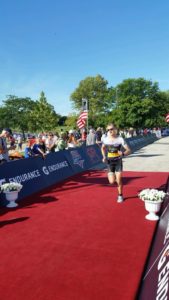-By Brian Reynolds
It’s winter in Michigan and you know what that means for us triathletes. It’s the Off-Season! Hopefully most of you are back training again after taking a break from the season. I’ve always enjoyed the off-season because you can make big gains to set yourself up for a good season. The best way to make big gains is to work on your limiters because let’s face it we all have something to improve on. So the question you may be asking yourself is “What should I work on this off-season”?
A good place to start is determine what your big races are next season because this will give you a better idea on what to work on in the off-season. What are your goals for your big race(s)? Do you want to win or podium in your age group? Do you want to qualify for USAT Nationals or Kona? Do you want to set a new PR? Whatever you want to accomplish at your race you need to determine what it’ll take to meet those goals. For example, if you want to podium in your age group you can look up the podium finisher’s past results to find out their splits per each discipline. Base on those race results you can figure out which discipline you need to improve on to become more competitive. It’s also important to assess if the time improvement needed is realistic per that discipline because if it’s not then you may need to get faster in the other areas. When you know what it’ll take to meet your race goals you’ll have a better understanding on what you need to focus on during the off-season.
It important to have off-season goals to help keep you on track and accountable to your training. You want to make sure that your goals are measurable. For example, some measurable goals could be to increase your FTP on the bike, threshold swim pace, or threshold run pace. What should I target for my goal paces and power? Good question! For the bike you can use tools such as Best Bike Splits to help estimate the power required to do the bike course in a certain amount of time. If you know roughly the power you need to sustain in the race then you can correlate that to a FTP number. For the swim you can compare your paces to the paces of your competitors. If your competitors are swimming 5 – 10 sec per 100 faster than you then you can set your threshold pace goal to be 5 or 10 seconds faster. Similar to the run you can check out your competitors run paces.
When you have your specific goals set for the off-season the next most important question becomes “How are you going accomplish your goals”? For the bike if you are not too familiar training with power you probably need to consider getting a training plan or better yet getting a coach. For the swim if you are swimming between 1:40 to 2:30 per 100 it would be a good idea to look at improving your swim technique. Athletic Mentors offers a video swim analysis and have experts on deck to help critique your swim stroke and will provide helpful tips and drills. Better yet you can join a winter swim program to work on technique, speed, and stamina such as the program that Athletic Mentors offers. If you are proficient swimmer (under 1:40 per 100) then you can consider joining a master swim program to swim with other faster swimmers. Finally for the run you can join a run camp or if you are a experienced runner the best bet is to hire a triathlon coach to help optimize your running while balancing the other disciplines during training.
Finally if you fall short from hitting your off-season goals don’t sweat it you have time during the race season to continue your improvements. Remember that the most important question is that “Are you faster than you were exactly one year ago from today?” If that answer is “Yes” then you made progress which is what all endurance athletes are striving to achieve.











